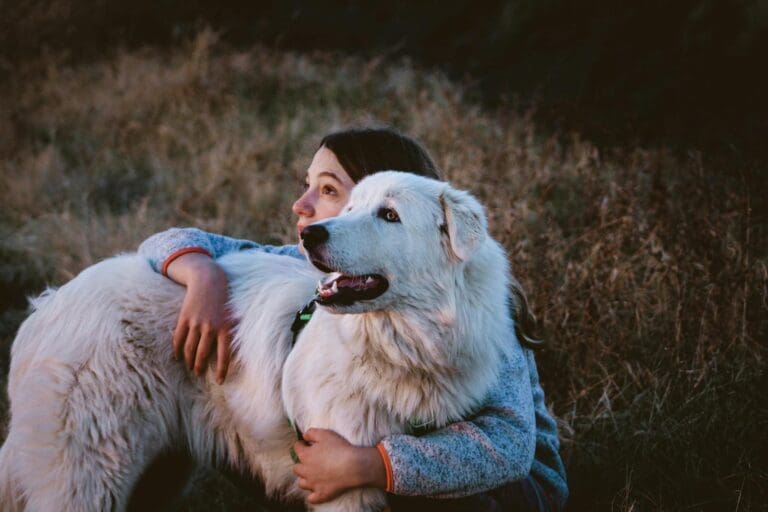Hiking with your dog is a wonderful way to share new experiences and create lasting memories. By following these 10 tips, you can ensure a safe, enjoyable, and rewarding hiking adventure for both you and your four-legged friend.
1. Start Slowly

Just like a person, dogs need to build up their endurance before tackling long hikes. Start your dog with walks around your neighborhood on flat, easy surfaces at a slow pace to assess their conditioning.
If your dog is not used to hiking, start with short hikes and gradually increase the distance and difficulty as they get more fit.
2. Choose Dog-Friendly Trails
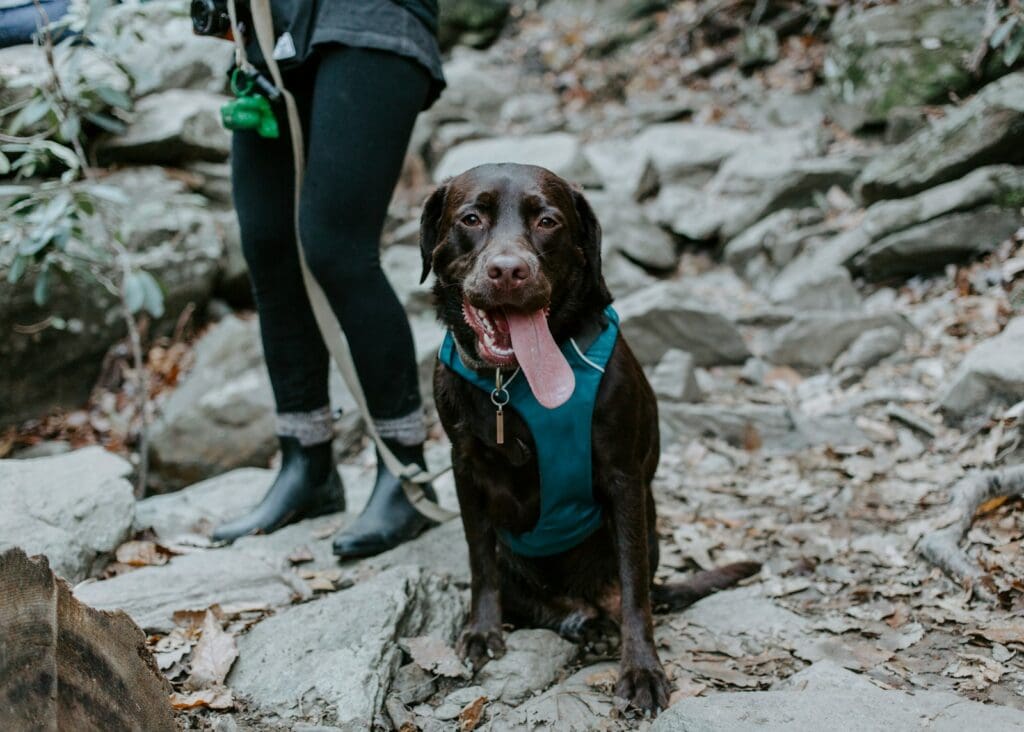
Do some planning and make sure you are familiar with the trail you are going to hike on with your dog. Opt for trails that are dog-friendly and allow pets. Research regulations and requirements beforehand
Some trails are better suited for dogs than others, depending on their size, age, and fitness level. Trails with varying terrains, gentle slopes, and clear paths are great options for both novice and experienced hikers. Be sure to choose a trail that is appropriate for your dog’s abilities.
3. Check for Leash Rules
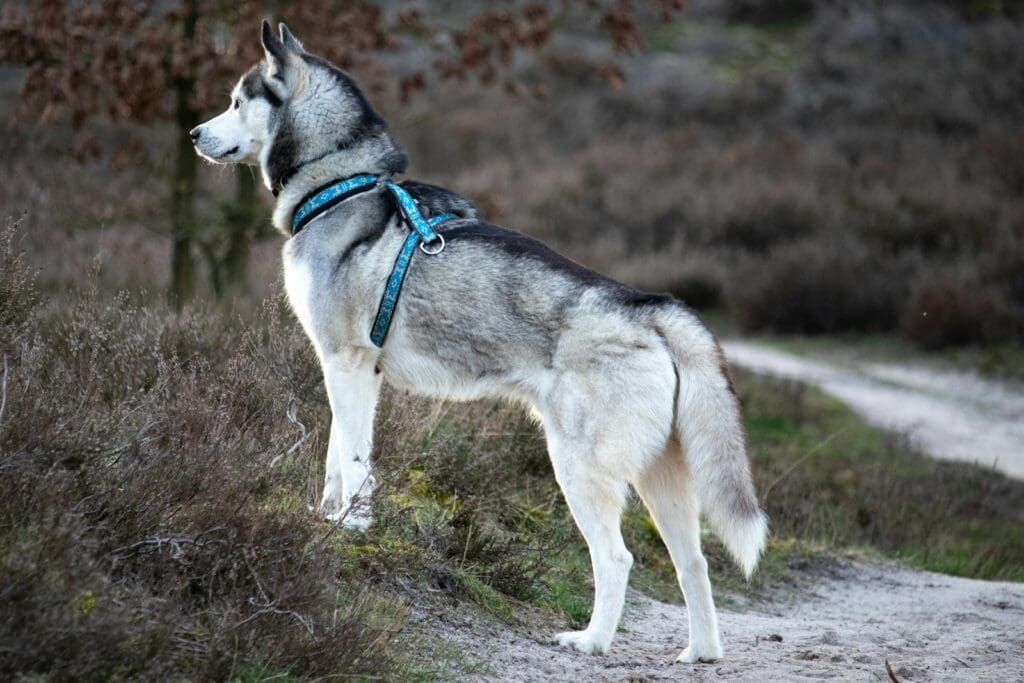
No dog hiking tips article would be complete without a heads up to respect the rules and laws of the area you’re hiking in. Always be a respectful hiker.
While some trails may allow off-leash hiking, it’s essential to follow the rules and leash regulations. Even if your dog is well-trained, it’s always a good idea to keep them on a leash when hiking. This will help prevent them from running off and getting lost or injured. This not only ensures their safety but also respects other hikers, wildlife, and the environment.
If you plan on allowing your dog to be off-leash, first practice off-leash walking in a safe environment, such as a fenced-in area or park. Call your dog regularly to come back to you, and use treats to reward your dog to reinforce this behavior.
4. Protect Their Paws
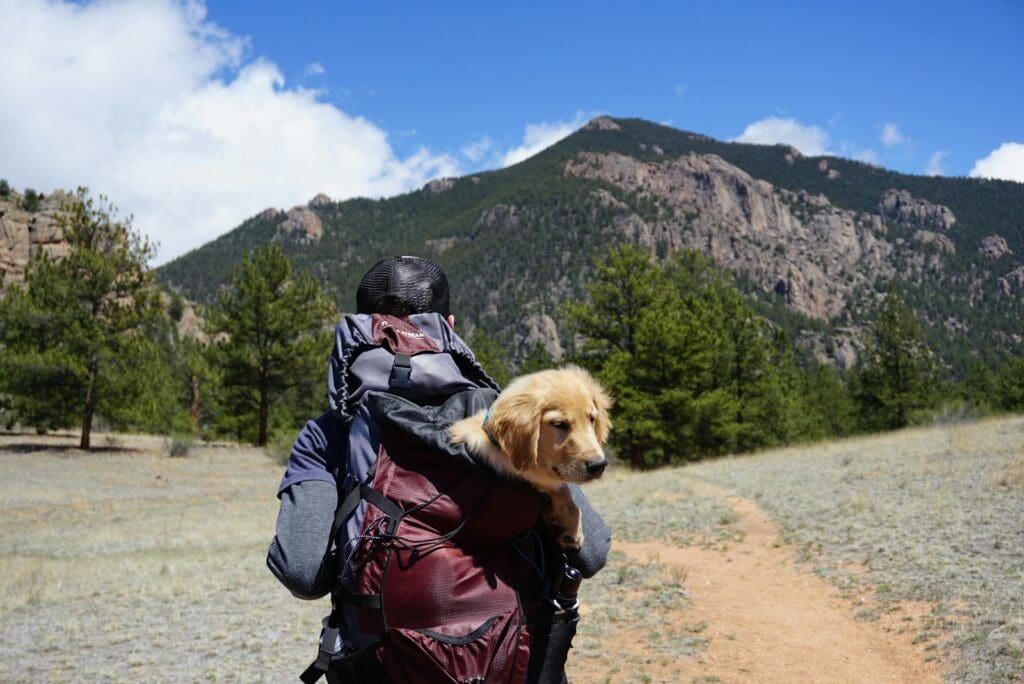
Hiking trails can have varying surfaces, including rocks, gravel, and hot pavement or rocks. Just like you wear special boots for hiking, your dog may need protection too.
Protect your dog’s paws with booties or paw balm to prevent injuries, burns, or irritations. Gradually introduce your dog to wearing booties before the hike.
5. Pack the Essentials
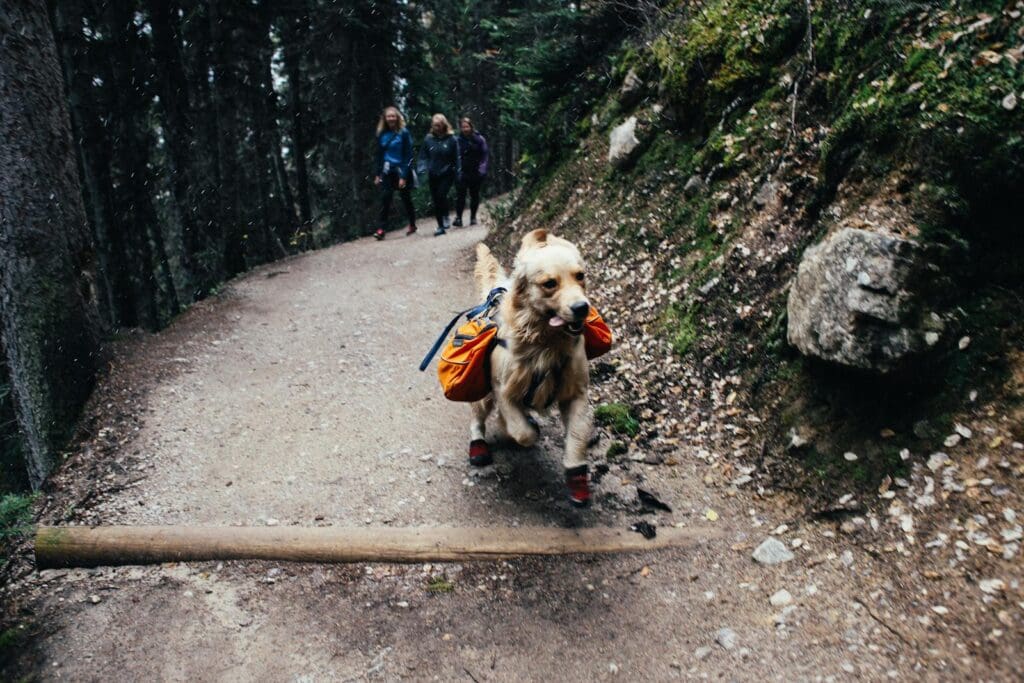
Pack a doggy backpack with essentials like water, a collapsible bowl, waste bags, a first aid kit, and a leash. If you’re planning an overnight hike, bring extra food, blankets, and a comfortable sleeping pad for your pup.
Your dog will also need food and treats to keep their energy up. Being prepared ensures your dog’s comfort and safety throughout the journey.
6. Stay Hydrated
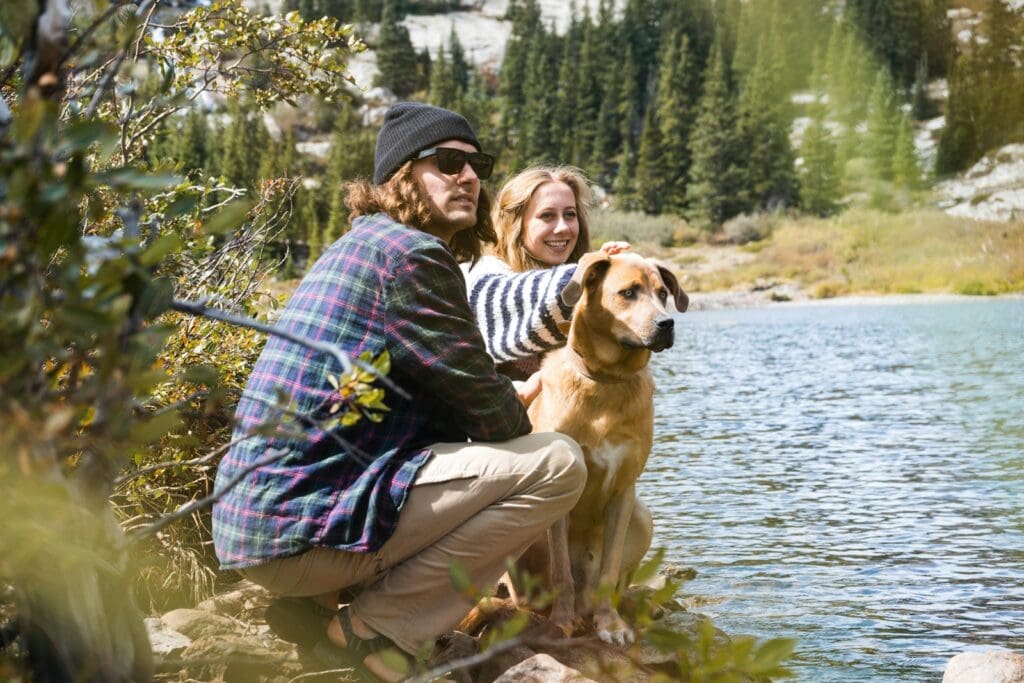
Another crucial dog hiking safety tip is to bring plenty of water. Dogs can get dehydrated quickly when hiking, so it’s important to bring plenty of water for both you and your dog.
Just like you, your dog needs to stay hydrated during the hike. Carry enough fresh water for both you and your pup, and take breaks to allow them to drink. Hydration is crucial to prevent overheating and keep their energy levels up.
7. Watch for Overheating
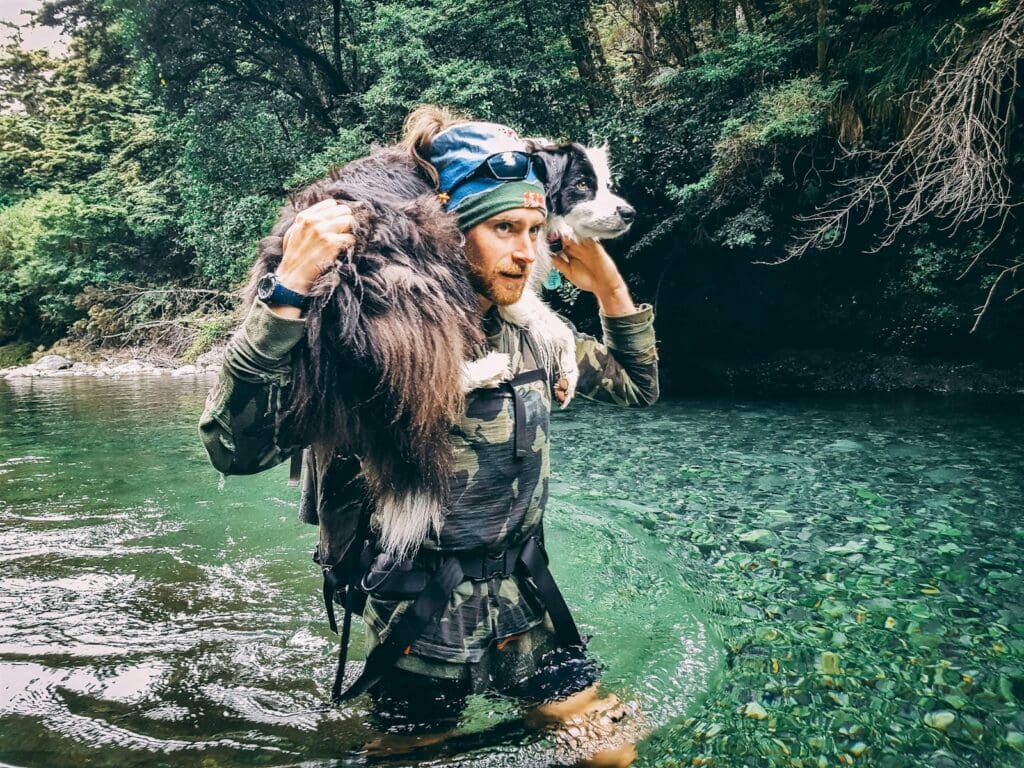
Dogs can easily overheat, especially on warm days. Keep an eye on your pup’s behavior and look out for signs of panting, excessive drooling, or lethargy. Take frequent shade breaks and avoid hiking during the hottest parts of the day.
Hiking can be tiring for both you and your dog, so be sure to take breaks often to rest and refuel.
8. Be Prepared for the Weather
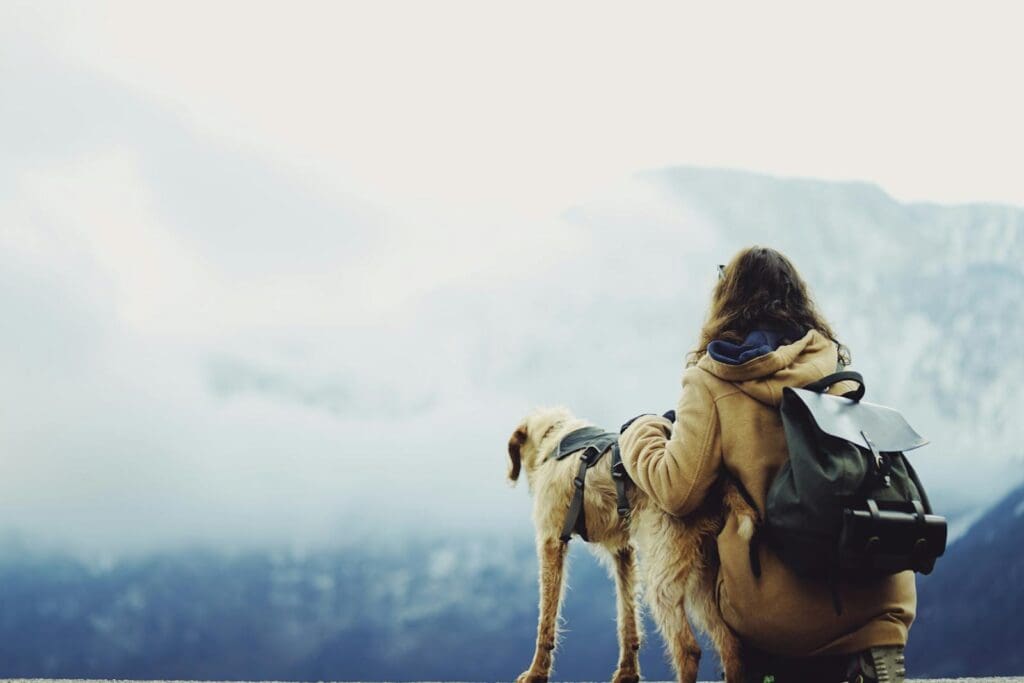
Check the weather forecast before you go hiking, then plan and dress accordingly. Be sure to bring rain gear if there is a chance of rain. Also, be prepared for and aware of hot weather. Your dog may need booties. When it’s 90°F or hotter, your dog could be at risk for heatstroke. In humid weather, temperatures above 82°F can be dangerous. All dogs are different, and temperature tolerance could vary.
Conversely, in below-freezing weather, most dogs should not be out for more than 10-15 minutes. It could be unsafe for medium and small dogs at temperatures of 40°F or lower and at 35°F or lower for large dogs.
Read More: 10 Things to Know Before You Rescue a Dog
9. Practice Good Trail Etiquette and Be Aware of Your Surroundings
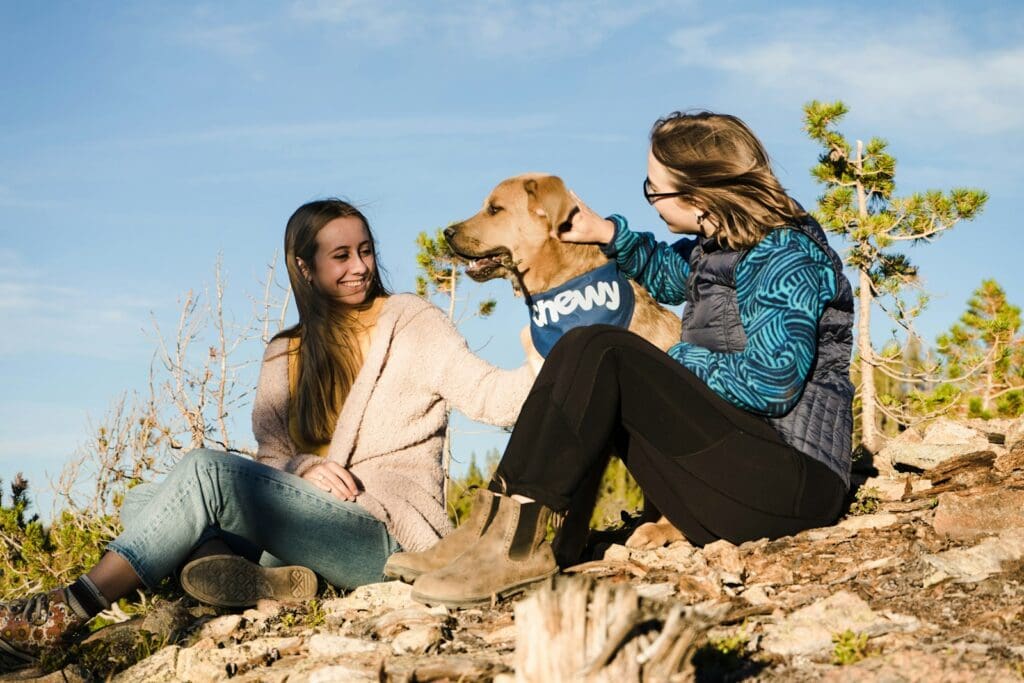
Similar to the leash-rule dog hiking tip, be courteous to other hikers and wildlife by practicing good trail etiquette. Clean up after your dog. Respect nature by staying on marked paths to minimize your impact on the environment.
Be aware of your surroundings. Watch out for hazards such as cliffs, rocks, and poison oak. Be sure to keep your dog away from these dangers. Yield the trail to others, and keep your dog on a leash when required.
Read More: 10 Biggest Mistakes Dog Owners Make
10. Check for Ticks and Wildlife
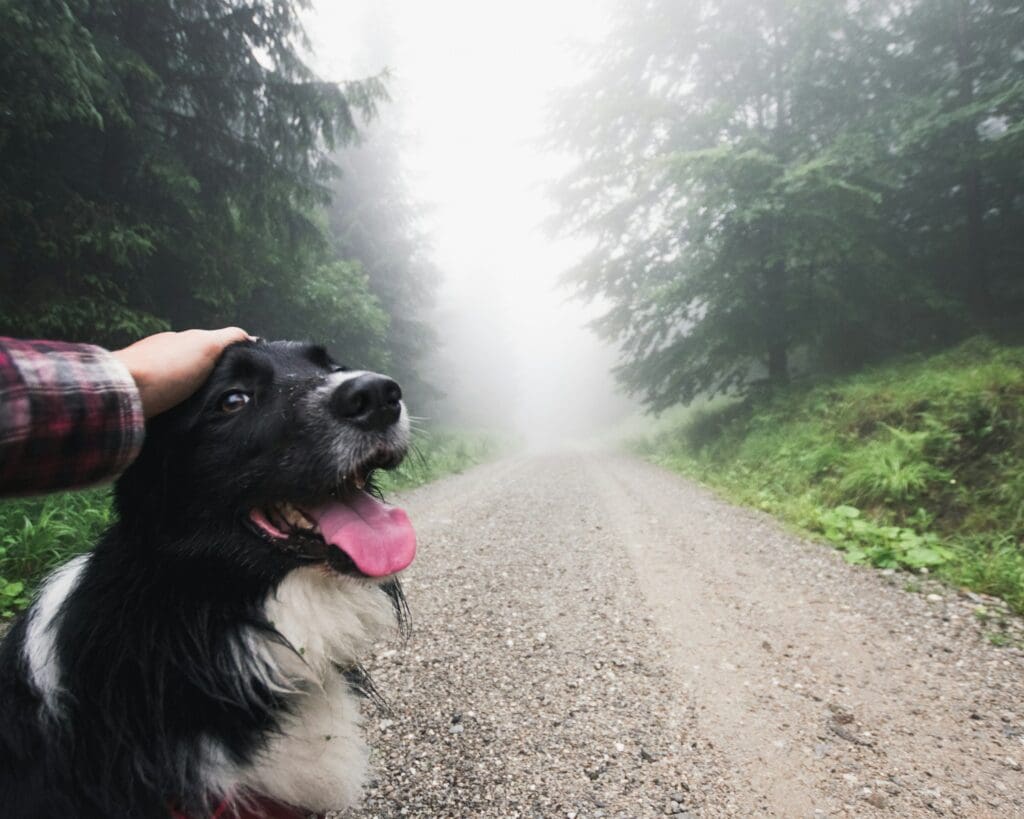
Wildlife can be present on hiking trails, so be cautious, keeping your dog under control to avoid encounters that could be potentially dangerous for both parties.
Ticks can also be present, so check your dog for ticks after the hike. Consider using a tick removal tool to extract the tick from your dog’s skin, or you can use tweezers, grasp the tick as close as possible, then pull it out in a straight, steady motion. Follow these tips from the Humane Society.
Read More: Tips for Leash Training Your New Pup
How Far Can My Dog Hike?
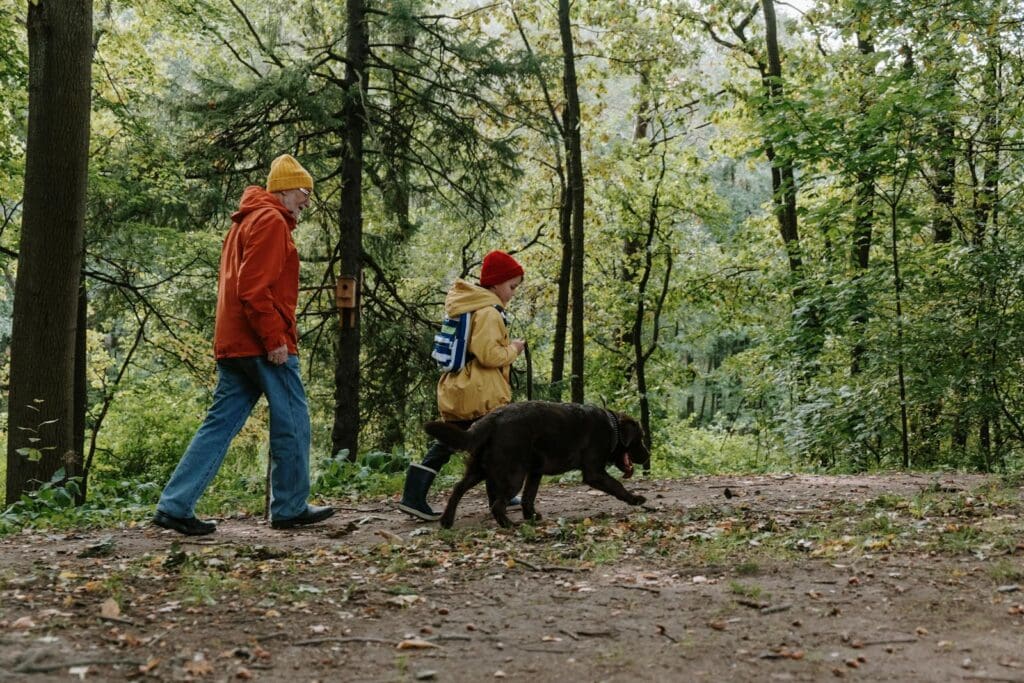
If you have never taken your dog on a hike before, you want to start with shorter distances and build endurance. Regardless, you first need to consider your dog’s age, size, and breed. Dogs with flatter noses have more respiratory challenges. Consider older or arthritic dogs like puppies.
- A 2-month-old puppy can hike for roughly 15 minutes on a flat, easy trail at a gentle pace. Pups shouldn’t hike more than a mile or two until the growth plates at the ends of their long bones have closed.
- Dogs who have had little exercise or are overweight should also start on short hikes on flat, easy trails that are no more than a mile at first.
- An average size dog that is in good shape can handle a 5 to 10-mile hike. Thereafter, properly conditioned dogs can handle 20 miles.
- Consult your veterinarian if you’re unsure about your dog’s ability to handle certain trails.



